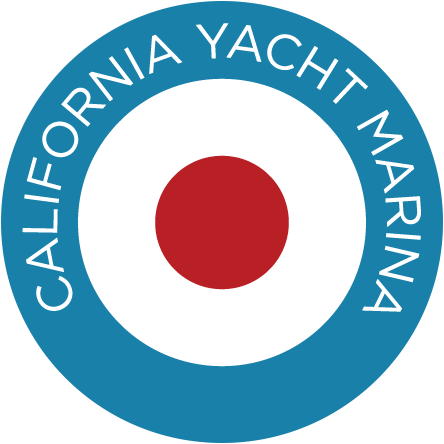California Yacht Marina
Who gives way to whom at sea?
Who must yield?

At best, it’s embarrassing; in a worst case scenario, it can lead to tragedy. Not understanding sailing boat hierarchy and which boat must yield to the other is a dangerous lapse in knowledge. Of course, even experienced sailors can make a mistake, especially if the situation gets complicated. Here, we offer a quick guide, to make sure you’re equipped to make good decisions regarding yielding at sea.
Keeping a Lookout
Even on the most beautiful, breezy, sunny day, sailing in southern California can become dangerous in a crowded harbor. It’s important to keep watch in all directions, and even more important to know which boats have the right of way. The basics are simple enough, but in a crowd, it can become complicated, especially considering the different types of boats and the limitations some may have in terms of visibility. Let’s start with the basics.
Understanding the Give-Way Hierarchy
This is the easy part, and it’s a breeze to remember, because it makes sense.
- Power boats give way to sailing boats.
- Sailing boats give way to boats that are engaged in fishing.
- Boats engaged in fishing give way to vessels that have restricted maneuvering abilities.
- Vessels with restricted ability to maneuver give way to vessels that are not under command.
- An exception: Sailing boats that are motor sailing do not take priority over power boats, even if their sails are hoisted.
Now, what happens if the boats are the same kind of boats?
- Sailing Boats:
- Port tack gives way to starboard tack.
- If the boats are on the same tack, the windward boat must give way.
- In situations in which the sailing boat on port tack can’t tell which tack another sailing boat to windward is on, the boat with the port tack gives way.
- Power Boats:
- When two power boats are heading towards each other, each boat should alter its course to starboard, allowing the port sides to pass each other.
- For two power boats risking collision as they cross paths, the vessel which has the other on its starboard side must give way. Additionally, it must avoid crossing ahead of the stand-on boat.
- In situations in which a power boat is meeting another head on but is unsure if a collision is likely, it’s best to play it safe and alter course to starboard.
Important to Note
Understanding the difference between give-way vessels and stand-on vessels is important in avoiding a collision. In the event that two similar vessels are crossing, the one that has the other to its starboard side is the give-way vessel, and this is the boat responsible for keeping clear. The give-way boat must alter course if necessary, in order to avoid a collision, and should do this by making an obvious course direction in plenty of time. This lets the stand-on vessel know, beyond the shadow of a doubt, that the give-way vessel has taken action to avoid a collision.
The stand-on boat should facilitate the give-way boat’s maneuvering, keeping to its course and speed to make things easy on the give-way boat. If, however, the give-way vessel is not taking the appropriate action to avoid a crash, the stand-on vessel must be ready to quickly turn out of the way. If necessary, the give-way boat should stop, but only as a last resort.
Overtaking Rules
When a vessel is approaching more than 22.5° behind the other vessel’s beam, it is said to be overtaking that vessel. This means the overtaking sector covers an arc of 135°, the same arc of a stern light. This makes it easy to see a vessel you are overtaking, because you will be able to see the stern light as you approach. During the day, though, it is not as easy. Sometimes, it’s hard to determine whether you are overtaking a vessel or crossing its path. If you have any doubt, or doubt about the right of way, proceed with caution and keep well clear of the other vessel. If you know that you are overtaking, though, follow these guidelines.
- No matter the size or type of vessels, they all must keep well clear of others when overtaking.
- The courteous way to overtake sailing boats is on the leeward side, so that you don’t take their wind.
- When being overtaken, a vessel must maintain its course and speed.
- The overtaking vehicle must be well clear of the other boat before resuming its original course, so that the overtaken vessel can maintain its course throughout the maneuver.
Staying Safe at Sea
Whenever you are boating, it’s vital that you keep a lookout at all times, and remember to follow the give-way hierarchy, especially in a crowded harbor situation. If you are looking for a safe place in Southern California to dock your boat, trust California Yacht Marina. In business for over 35 years, California Yacht Marina has a well-earned reputation for excellence in the Southern California fishing and sailing community. We’re a family-owned business with state-of-the-art facilities at our three marinas, and we can meet your needs, whether you want a family friendly place to berth your boat, you’re looking for an amazing waterfront wedding venue, or you need marina filming locations for rent in Los Angeles, CA . Schedule a tour with us so you can see our spectacular boating facilities for yourself, call us at ??? or contact us through our website for more information.
